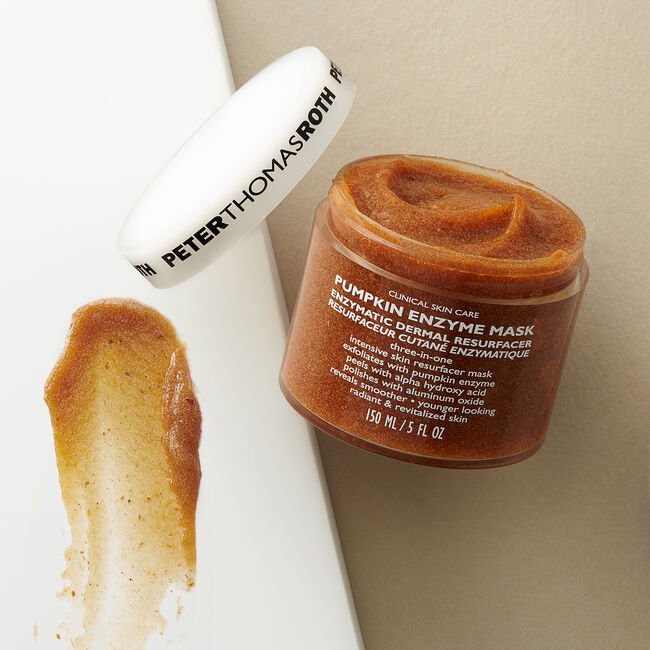Exfoliation: A Key Step in Your Skincare Routine
Exfoliation is essential for any effective skincare routine. Whether you’re dealing with acne, hyperpigmentation, or dull skin, exfoliation is a necessary step.
You can exfoliate your skin through two methods: mechanical exfoliation or chemical exfoliation. Mechanical exfoliation includes scrubs, dry brushing, dermaplaning, and microdermabrasion. I love using scrubs and dry brushing on my body, and I see an esthetician monthly for a dermaplane treatment.
Chemical exfoliation is my favorite method for regular face exfoliation. I typically use a chemical exfoliant once daily. In today’s post, we will discuss the different types of chemical exfoliants so you can decide which one is best for your routine.
Chemical exfoliants can be categorized into three main groups: enzymes, AHAs, and BHAs.
Enzymes
Have you ever eaten pineapple and felt your tongue tingle? That’s because of the enzymes! Enzymes are protein catalysts that break down skin cells. They are often derived from fruit extracts and can be very potent. I love using enzymes because they offer a diverse range of benefits beyond just exfoliation.
Recommended Products:
- Peter Thomas Roth Pumpkin Enzyme Mask: This mask combines pumpkin enzymes, AHAs, and aluminum oxide crystals to exfoliate and reveal smoother skin.
- Tatcha The Rice Polish Foaming Enzyme Powder: A gentle enzyme powder that exfoliates and softens skin, suitable for daily use.
AHAs (Alpha Hydroxy Acids)
AHAs are acids that break down the skin. They are the most diverse group of acids, ranging from gentle to very potent. I recommend using AHAs daily, but it’s important to choose the right one for your skin type:
- Lactic Acid: Derived from milk, lactic acid is a milder AHA that exfoliates and hydrates the skin simultaneously.
Recommended Products:
- Shani Darden Lactic Acid Serum: A luxurious serum that gently exfoliates, smooths, and brightens the skin.
- Sunday Riley Good Genes All-In-One Lactic Acid Treatment: A potent lactic acid treatment that exfoliates and brightens the skin.
- Mandelic Acid: Derived from almonds, mandelic acid is another mild AHA that is great for acne-prone skin due to its antibacterial properties.
Recommended Products:
- The Ordinary Mandelic Acid 10% + HA: A gentle exfoliant suitable for sensitive and acne-prone skin.
- Purerb Caviar Lime Cleansing Foam: A luxurious foam cleanser that exfoliates and brightens the skin while being gentle on acne-prone areas.
- Glycolic Acid: Derived from sugar cane, glycolic acid is one of the stronger acids available. Its small molecular size allows it to penetrate deep into the skin, making it quite aggressive. I don’t recommend using glycolic acid on the face regularly.
Recommended Products:
- Pixi Glow Tonic: A popular glycolic acid toner that gently exfoliates and brightens the skin.
- Nécessaire The Body Wash with Glycolic Acid: An effective body wash that smooths and brightens the skin, targeting rough patches and body acne. (Not suitable for facial use.)
BHAs (Beta Hydroxy Acids)
BHAs are oil-soluble acids that break down the oily sebum found on the skin. When used alongside other exfoliants, BHAs can clear out the buildup of sebum in our pores, preventing or treating breakouts. The most common and effective BHA is salicylic acid.
Recommended Products:
- Paula’s Choice Skin Perfecting 2% BHA Liquid Exfoliant: A cult-favorite salicylic acid treatment that unclogs pores and smooths skin.
- Isle of Paradise Confidently Clear BHA Body Wash: An effective body wash that targets blemishes and improves skin clarity, leaving the skin smooth and clear. (Not suitable for facial use.)
-Innisfree Bija Clarifying Salicylic Cleansing Foam: A gentle foaming cleanser with salicylic acid that effectively clears pores and treats breakouts.
To better understand how to add exfoliation to your skincare routine, check out my previous post here.




